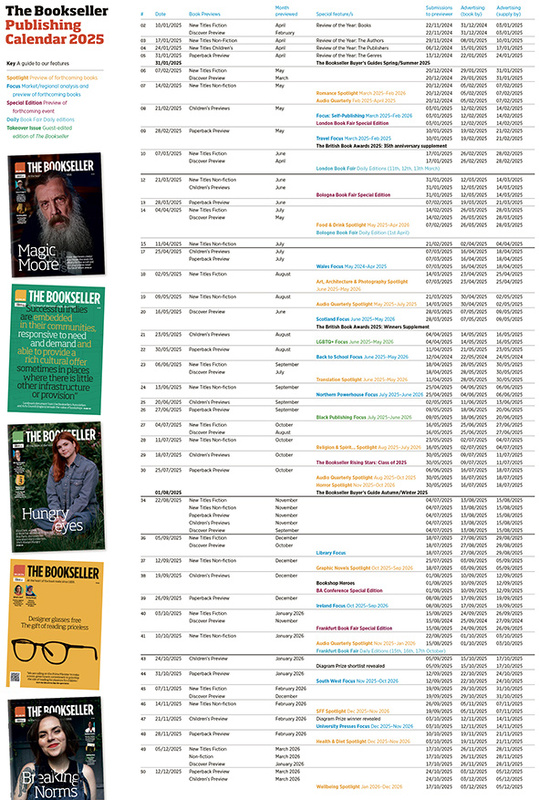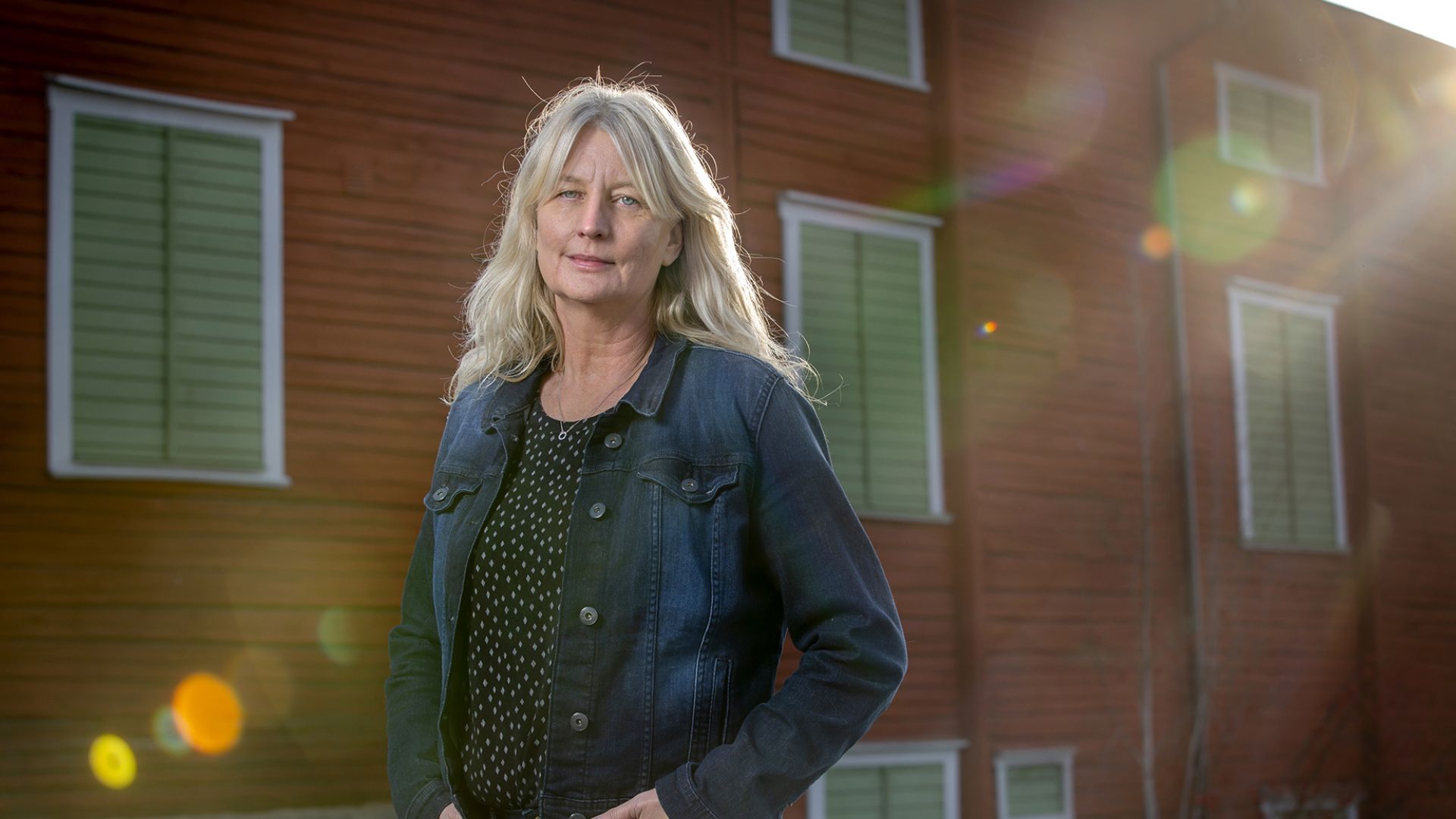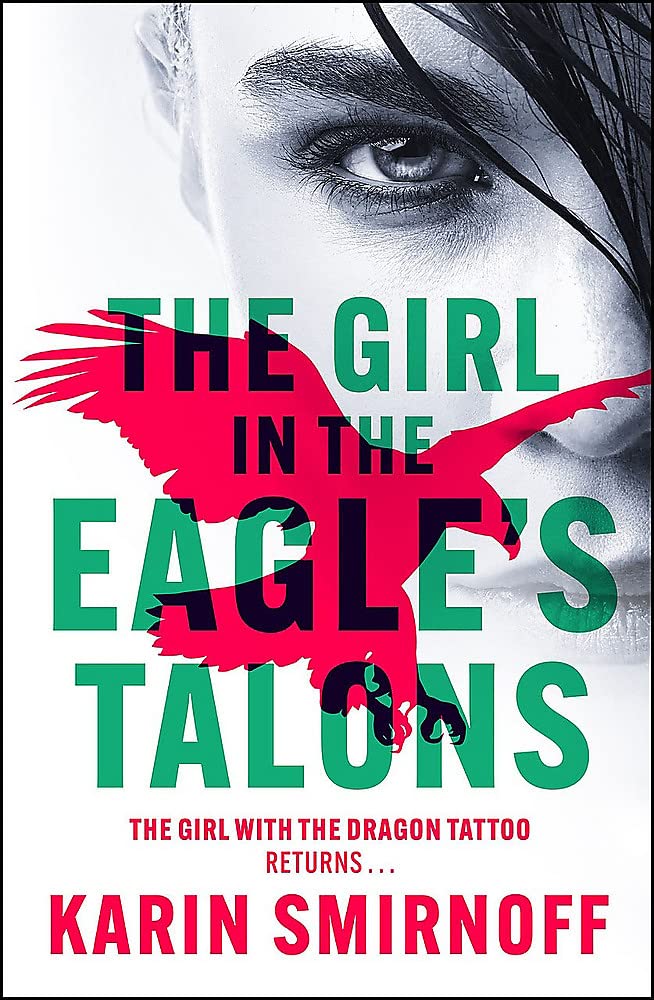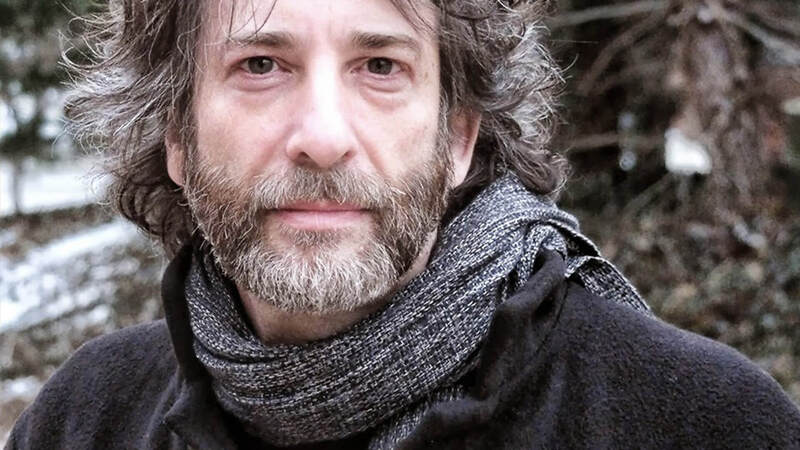You are viewing your 1 free article this month. Login to read more articles.
Karin Smirnoff discusses her Scandi-noir novel as she takes up the reins from Larsson's Millennium series
Larsson’s legacy: Karin Smirnoff picks up the reins from Lagercrantz for the next Scandi-noir instalment of the ‘era-defining’ Millennium series.
It is a Stygian night and the bus cleaves through the dense Norrland forest, the only headlights on a lonely road. A serviceable beginning for a Scandi-noir but murder is not on the cards in the literal sense, only literary, as we are heading for the launch of the continuation of Stieg Larsson’s Millennium series, Karin Smirnoff’s The Girl in the Eagle’s Talons.
The bus is courtesy of Smirnoff’s Swedish house Polaris and packed with the series’ international publishers—including MacLehose Press’ Katharina Bielenberg and Corinna Zifko—and journalists. One of the latter is a Stockholm-based investigative hack who grouses so much about the current state of reporting and the ignominy of having to cover “cultural stories” that I wonder if he is cosplaying Mikael Blomkvist, the late Larsson’s alter ego and support to the series star, Lisbeth Salander.
The drive is an hour from the small mining city Skellefteå, which lies some 800km north of Stockholm, to Smirnoff’s home village of Hertsånger (population: 610). We are given Vargtass (meaning “wolf’s paw”) for the journey, a deadly lingonberry juice and vodka mix, while Robbie Williams’ “Millennium” blasts on loop. The launch is in Smirnoff’s rambling, bookshelves-stuffed, hygge-cosy farmhouse with press and book trade folk joined by, it seems, everyone in the village, including kids and dogs. When midnight strikes and sales data comes in to confirm that Eagle’s Talons will top the Swedish bestseller list, it is “Skål!” all around.
A lot of hullabaloo for a launch, but non-Swedes perhaps can’t quite appreciate the weight of taking on Millennium. Yes, the sales are massive: more than 100 million copies globally for Larsson’s original titles plus the David Lagercrantz’s follow-up trilogy—6.8 million units for £39.3m through Nielsen BookScan UK—helped by the Swedish and Hollywood film adaptations. But it is the cultural significance that weighs. The Salander books touched a nerve, becoming if not the Great Swedish Novel Series then at least era-defining: a gimlet-eyed look at 21st-century Sweden, suggesting its model liberal social democracy is underpinned by institutional abuse of power and violence against women.
Today, I don’t give a shit about being known as an author, I just want to do the work
Smirnoff was a leftfield choice by the Larsson estate and its agent Magdalena Hedlund for the continent-spanning IP after the safe pair of hands of Lagercrantz. The 58-year-old Smirnoff’s previous four books can probably be best described as literary with crime elements. Plus, she only started writing fiction less than a decade ago, embarking on a creative writing course after her children had grown up. It was a fairly meteoric entrée, as her début, 2018’s Jag for ner till bror, was shortlisted for Sweden’s August Prize; it and her subsequent three non-Millennium titles have shifted more than 800,000 copies in her home market.
Smirnoff seems unfazed, almost amused, about the hoopla. “When the first books first came out, I loved them. They were so different and they had Lisbeth Salander—a character that I, and a lot of women, could really relate to. I said yes straight away [to the offer], no hesitation. I appreciate that so many people are involved across the world and want to sell a lot of books. But it’s still just a book.”
Smirnoff’s Salander
When it came to writing, Smirnoff says that the superhero aspect of Salander was a sticking point. Indeed, Salander had evolved into having almost Jack Reacher indestructibility (if you imagine Reacher as a neurodivergent, barely five-foot, energetically promiscuous bisexual Goth super-hacker). Smirnoff says: “The first three books were fantastic but with the others you started having the same plots, the same boring Lisbeth Salander in a way. She comes in, solves everything. Where’s the vulnerability? How do I humanise her but still keep her a hero?”
I’m angry when it comes to men’s violence against women, and I think you have to be a woman to really understand the depth of that anger
The answer was introducing Svala, the 13-year-old maths genius daughter of Salander’s deceased half-brother, who lives in the natural resources-rich northern town of Gasskas. (“I thought about her having a child. But Salander changing diapers? No way.”) Svala’s mother has gone missing, her grandmother murdered. As Svala’s closest relative, Salander is asked by social services to come north to look after the child. They form an uneasy bond, but soon it becomes clear that something is afoot: Svala’s mother was enmeshed in organised crime and hailed from a Sámi reindeer-herding family that was blocking a lucrative wind farm project. Svala is being hunted, but by whom—and why? And how does that link to a string of disappearances of local girls? Blomkvist arrives in Gasskas too, ahead of his estranged daughter’s marriage to local council big-wig Henry. Blomkvist’s beloved magazine Millennium has gone online and podcast-only, with no place for an ageing print journalist. But his investigative antennae perk up upon hearing about the missing girls, while suspicions build on Henry’s perhaps sinister role in the wind farm deal.
For my two kronor, Smirnoff’s is the best of the Salander septet. A smart, crime trope-free tale with boundary-pushing prose (in Sarah Death’s sprightly translation) that is still compulsively page-turning. There are genuine shock reveals and arguably the most horrific, and nuanced, villain of the series. It is also the funniest, including some winking asides—like when Svala asks Salander if anyone has ever told her she looks like Noomi Rapace (the lead in the Swedish Millennium films).
We in Sweden need to be more critical and think of the costs to people. When the billions roll in, the problems do, too
Like Larsson, Smirnoff was born in the sparsely populated Västerbotten county, split her childhood between Stockholm and the north, and eventually became a journalist. She worked for a number of publications in Stockholm and as a foreign correspondent. But she always returned to Västerbotten and, after a couple of decades in the media, upped sticks and moved back home, buying a business that supplies building contractors with wood products. The creative writing course came at “the perfect time. I think it was Strindberg that said: ‘Live first, then write’. I was thinking about what I wanted to write, not about being a writer. When I got my first press card in my early twenties, that was huge for me, but it became my whole identity because I didn’t know myself. Today, I don’t give a shit about being known as an author, I just want to do the work”.
Bringing the action of Eagle’s Talons to north Sweden is not just a Larsson/Smirnoff homecoming, it also taps into the whole series’ crusading spirit. The Norrlands (the northerly half of Sweden) in general are in the midst of a “green rush”, with multinationals piling in to harness renewable energy and mine minerals for eco-products like electric car batteries. An underlying theme of Smirnoff’s book is that these environmentally friendly companies are the same kind of rapacious bastards as the petro-giants. She says: “A lot of companies are coming in from abroad and the fact that there are fewer people here makes it easier to not listen to locals’ concerns. I’m not against green industries—we need them. But we in Sweden need to be more critical and think of the costs to people. When the billions roll in, the problems do, too.”
Smirnoff is, of course, the first woman to write for a series with a central tenet of railing against the patriarchy (the Swedish title for Larsson’s first book directly translates to “Men Who Hate Women”—The Girl… is English-language branding). Smirnoff nods: “But my take is not less violent than the others—maybe it’s even more violent, because I use violence differently. I have the female eye on it. And writing it is sort of revenge for me, to dig into what happens to people who are exposed to violence. I’m angry when it comes to men’s violence against women, and I think you have to be a woman to really understand the depth of that anger.”











